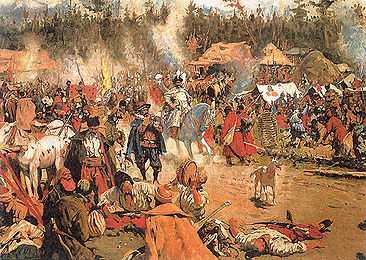Tushino

The village was attested since the late 14th century as an estate of boyar Vasili Ivanovich Kvashnin-Tusha and later his sons Pyotr and Semyon. In the middle of the 16th century, the village and the nearby Saviour Monastery were acquired by the Troitse-Sergiyeva Lavra. One of the finest of Russian tent-like churches was built in the monastery under Ivan the Terrible.
In the late 16th century, the monastery used to provide lodging for foreign diplomatic missions before their arrival in Moscow. During the Time of Troubles, False Dmitry II and his supporters settled in Tushino between 1608 and 1610. The Tushino camp was a replica of the Muscovite court, having its own prikazes and the Patriarch. From here, False Dmitry II was laying siege to the Moscow Kremlin.
In December of 1609, the Tushino Thief (as the impostor came to be known) and his wife Marina Mniszech fled from Tushino to Kaluga after losing Polish support. In 1610, the combined Russo-Swedish army of Mikhail Skopin-Shuisky and Jacob de La Gardie forced False Dmitry's supporters out of Tushino. Thereafter the monastery was disbanded, and the village declined.
In the second half of the 19th century, Tushino saw the first industrial enterprises, such as windmills and a textile mill. In the 1920s, they built Tushino Stocking Factory. In 1929, the Soviets established a flying school of the Osoaviakhim (Осоавиахим, which is short for the Society for Support of the Defense, Aviation, and Chemical Industries) and then Tushino Airfield with research facilities and aircraft factories next to Tushino.
See also
- Soviet air shows, for which Tushino airfield was notable
Online references
| Wikimedia Commons has media related to Tushino. |
Coordinates: 55°49′53″N 37°26′24″E / 55.83139°N 37.44000°E